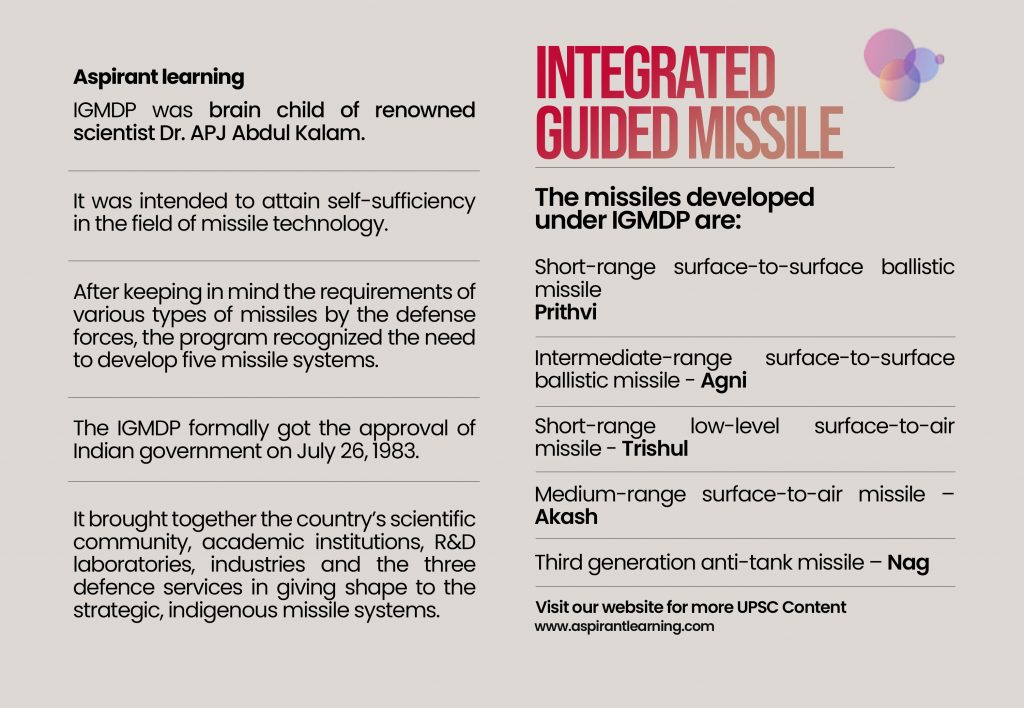News Highlights:
Recently, India successfully launched Agni-V ballistic missile with a range of over 5,000 km.
Key takeaway:
- Agni-5 is an ingeniously built advanced surface-to-surface ballistic missile developed under the Integrated Guided Missile Development Programme (IGMDP).
- It is a fire-and-forget missile, which cannot be stopped without an interceptor missile.
- The missile can hit targets beyond the range of 5000 km and is crucial for India’s self-defence systems.
Agni V Missile:
- About:
- It is the most advanced surface-to-surface indigenously built fire and forgets ballistic missile which once fired cannot be stopped, except by an interceptor missile.
- It was successfully launched from APJ Abdul Kalam Island, Odisha
- Specifications:
- The three-stage solid-fuelled engine missile is capable of striking targets at ranges up to 5,000 km.
- It also includes the Prithvi short-range ballistic missiles and fighter aircraft.
- It has the capability of carrying a nuclear warhead of about 1.5 tonnes.
- India has also completed its nuclear triad and operationalised its second-strike capability, with ballistic missile submarine INS Arihant undertaking deterrence patrols.
- Capability:
- With a very high degree of accuracy and can reach most parts of China.
- It has already been canisterised which improves the ease of handling and operation.
- Developed By:
- It has been developed under the Integrated Guided Missile Development Programme (IGMDP).
Other Ranges of Agni Missiles:
- Agni I: Range of 700-800 km.
- Agni II: Range more than 2000 km.
- Agni III: Range of more than 2,500 Km
- Agni IV: Range is more than 3,500 km and can fire from a road mobile launcher.
- Agni-V: The longest of the Agni series, an Inter-Continental Ballistic Missile (ICBM) with a range of over 5,000 km.

Integrated Guided Missile Development Programme:
- About:
- IGMDP was the brainchild of renowned scientist Dr. APJ Abdul Kalam.
- It was intended to attain self-sufficiency in the field of missile technology.
- After keeping in mind, the requirements of various types of missiles by the defense forces, the program recognized the need to develop five missile systems.
- The IGMDP formally got the approval of the Indian government in 1983.
- It brought together the country’s scientific community, academic institutions, R&D laboratories, industries and the three defence services in giving shape to the strategic, indigenous missile systems.
- Missiles developed under IGMDP:
- Short-range surface-to-surface ballistic missile – Prithvi
- Intermediate-range surface-to-surface ballistic missile – Agni
- Short-range low-level surface-to-air missile – Trishul
- Medium-range surface-to-air missile – Akash
- Third-generation anti-tank missile – Nag
Pic Courtesy: The Indian Express
Content Source: The Indian Express



